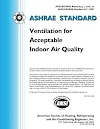Water Mist System is a unique firefighting system. By dispersing water at high pressure through specially-designed nozzles, water is forced through micro-nozzles to create an extremely fine mist that has a double extinguishing effect. As well as cooling the fire like a traditional sprinkler, it simultaneously starves the fire of oxygen like gas systems. When the mist comes into contact with flames, it evaporates and expands minimum 1,700 times. The dense vapor created displaces the flames and quickly extinguishes the fire.
High-pressure Water Mist is a unique firefighting solution, and often the only possible solution for a wide range of special applications.
Download The Following Water Mist Fire Fighting Design Notes:
1. Water Mist Calculation Notes
2. Water Mist Design Guide
3. Water Mist Guide
4. A Review of Water Mist Suppression Systems
5. Hi Fog Notes







2 Comments
This document provides an in-depth examination of water mist fire suppression systems, detailing the design principles, operational mechanisms, and performance evaluation criteria. It covers the various types of water mist systems, including low, medium, and high-pressure configurations, and their applications across different environments such as industrial, commercial, and residential settings.
ReplyDeleteThis post on "Water Mist Fire Suppression Design Notes" is a fantastic resource for anyone interested in fire safety and suppression systems. The detailed explanations of water mist technology and its applications in various settings provide valuable insights for both professionals in the field and those seeking to enhance safety measures in their own spaces.
ReplyDeleteI appreciate how the article delves into the mechanics of water mist systems, discussing their effectiveness in controlling different types of fires and minimizing damage. The inclusion of design considerations, such as nozzle placement and water droplet size, demonstrates a thorough understanding of the practical aspects of implementing these systems.